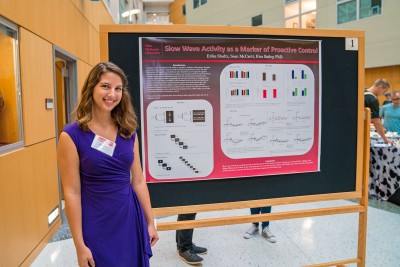Abstract
Slow Wave Activity as a Marker of Proactive Control
 Student: Erika Shultz
Student: Erika Shultz
Mentor: Kira Bailey (OWU Department of Psychology)
The Dual Mechanisms of Control theory states that people switch between two different types of control- proactive and reactive- based on what they’re currently doing in order to achieve their goals. These methods of control are associated with different types of brain activity. The current study aimed to reproduce and expand upon previous work by examining a specific type of electrical activity linked to proactive control in three different laboratory tasks. Because the specific activity was produced by all three tasks, its connection to the use of proactive control was strengthened which provided further support for researchers investigating goal-related brain functions.
The Dual Mechanisms of Control theory proposes that individuals flexibly alternate between two modes of control – reactive and proactive – based on current task demands (Braver, 2012). In imaging studies, reactive control is correlated with transient activity in the lateral prefrontal cortex (PFC) and the anterior cingulate cortex, while proactive control is associated with sustained activity in the lateral PFC. Research using event-related potentials (ERPs) has identified the frontal slow wave (FSW) as a neural marker of proactive control (Bailey, West, & Anderson, 2010; West & Bailey, 2012; West et al., 2012). The current study aimed to replicated and extend previous work by examining slow wave activity in three different tasks: the counting Stroop, N-back, and flanker tasks. Participants completed the three tasks while EEG was recorded. Stimulus and response-locked slow waves were present across all three tasks, further supporting its association with the implementation of proactive control.
